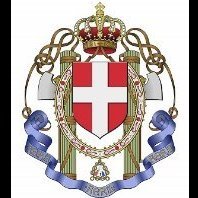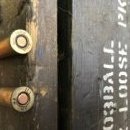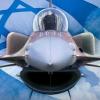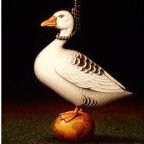Search the Community
Showing results for tags 'IBG Models'.
-
IBG Models is to release a family of 1/72nd Industria Aeronautică Română I.A.R. 80/81 kits from Spring 2024 - First boxing ref. 72564 Source: https://www.facebook.com/ibgmodels/posts/pfbid02H2TRpbKhtQ1nmiwKRn5qYHxZeprb5Qz4fqu8Bubad5Z2oBTYV2WL4fyYboo8WLr6l V.P.
- 56 replies
-
- 23
-

-

-
IBG Models catalogue 2024 is downloadable here http://ibgmodels.com/instr/IBG_models_KATALOG_2024.pdf V.P.
-
A few days ago IBG Models started a countdown teaser with clues about a future aircraft kit project. Guess what it is. November 8th - clue n°5. https://www.facebook.com/ibgmodels/posts/4597216843733257 five major manufacturing plants November 9th - clue n°4. https://www.facebook.com/ibgmodels/posts/4600004156787859 four production versions November 10th - clue n°3. https://www.facebook.com/ibgmodels/posts/4603505069771101 triple-blade propeller V.P.
- 260 replies
-
- 4
-

-
- IBG Models
- Dora
-
(and 1 more)
Tagged with:
-
There is still a bit of time left until Christmas and here IBG Models sent me a gift from me in the form of their new model of PZL P.24 B aircraft (72554) in Bulgarian paintings and the model came with 3D printed extras. And there are two kits dedicated to P.24 series aircraft: IBG 72U023 Radiators and Venturi Tube for PZL P.24A/B/C/E - 3d printed (1:72) and IBG 72U025 Pilot's seat with seatbelts for PZL P.24A/B/C/G - 3d printed (1:72). I would like to thank IBG Models for the supplied model and accessories. That's enough introduction now it's time to see what's inside. After opening it up, this is what it looks like inside. All the mouldings. Two plates and a film. Decal sheet and what I found very interesting is the lettering ( number 26 ) on the tyres! A revelation for me. There are three camouflage variants to choose from, I haven't chosen which one I will build yet. And as you can see there is also an invitation to "Babaryba 2024" it is the biggest and best modelling event in Poland. A complete novelty of IBG Models company, that is their 3D printed add-ons and here they are dedicated to PZL P.24 family of aircraft. All in all, we have a very interesting version of the P.24 in uncommon paintings with very interesting additions. I still have to look at the source materials to see what more can be squeezed out of this model. There is nothing left for me to do but to invite you to continue this workshop thread. I would like to thank IBG Models for the supplied model and accessories.
- 10 replies
-
- 7
-

-
- PZL P.24
- IBG Models
-
(and 1 more)
Tagged with:
-
This one has been sitting in its box in storage for over a year and a half, forgotten. I stumbled on a bunch of kits in various stages of completion that I put away to clear off my workspace for some projects that I needed to complete. This was a kit that I'd been hoping for for many years and bought it when it came out in 2021 or so, but lost interest before I got too far. Don't know why I stopped-it's pretty fun. I finished the engine and engine bay this afternoon. Hopefully I'll finish this one and some of the other shelf queens I found in there!
-
IBG Models is to release in 2018 (?) a 1/72nd Państwowe Zakłady Lotnicze / PZL P.24 kit - ref. 72523 Source: http://www.modelarovo.cz/norimberk-2018-jak-jsme-ho-videli-my/ V.P.
- 42 replies
-
- 3
-

-
- PZL
- IBG Models
-
(and 1 more)
Tagged with:
-
IBG Models is to release a family of 1/72nd Państwowe Zakłady Lotnicze - PZL P.11 aircraft kits. - ref. 72517 - PZL P.11a Polish Fighter - ref. 72518 - PZL P.11b in Romanian Service - ref. 72519 - PZL P.11c Polish Fighter - ref. 72520 - PZL P.11c Polish Fighter - Rare Birds - ref. 72521 - PZL P.11f - ref. 72522 - PZL P.11f on skis - ref. 72523 - PZL P.11g Kobuz Polish Fighter - ref. 72524 - PZL P.11g in Greek Service Sources: http://www.modelarovo.cz/norimberk-2018-jak-jsme-ho-videli-my/ https://nowosci.plastikowe.pl/aktualnosci/zapowiedzi-ibg-models-pzl-p-11a-1-72-pozna-jesien-2018/ V.P.
- 80 replies
-
- 4
-

-
The construction of an alternative version of the Polish fighter PZL P.11g "Kobuz" from IBG has come to an end. In the construction of the model I used accessories from YAHU MODELS in the form of YMA7212 Instrument panel kits, YSM7227 Accessoriess. The build had no problems, the parts fitted very well and the decals fitted very nicely on the surface of the model. The only thing that made the construction more difficult for me was to replace the glazing and I embossed a new one and made the frames myself from the sheet metal provided by the manufacturer. The model has the camouflage suggested by the manufacturer and shows an alternative designation from the 1940 pursuit brigade. I would like to thank the IBG MODELS company for the donated model and the YAHU MODELS company for the extras to build the model.
-
While doing some cleaning, I came across another model started years ago. There are still quite a few of them in my closet and the studio is also swamped with them and it's high time to finish them too. That's just for the record. Coming back to the model, I have a model of the Polish fighter plane PZL P.11g "Kobuz" in 1:72 from the IBG Models offer (cat. no. 72523). This is the last version of the P.11 and was built in one copy. The outbreak of war prevented further work on it. There are no photos or plans of what it looked like, so a model will be built based on what IBG Models offers in its kit. This will be such a hypothetical (what-if) version. The kit comes with a choice of two engine covers as well as two undercarriage options, wheels alone or in covers like the PZL P.24. There are two types of propellers on the frames too, two-blade and three-blade. In the manual, IBG included three paint schemes, two of which are the typical gray/haki/blue and the third is camouflage, and these are the ones I chose. On the PZL P.11g "Kobuz" Lt. pilot Henryk Szczęsny scored two air victories on September 14 and 15, 1939. Returning to the model I had the interior ready, but the fuselage not yet closed. Of the extras, I used products from Yahu Models, which I thank for providing them. And they are these kits: YMA7212 Instrument panel YSM7227 Accessoriess
- 20 replies
-
- 8
-

-
This is only my 2nd ever tank as I focus only on 1/72 aircraft usually but fancied mixing things up a bit. Picked this kit up randomly in an actual real model shop instead of online purchase! Really enjoyable quick build, photo etch gunsights were a pain as they are absolutely tiny. With my 1st ever tank, T-34-85
-
My second GB this year and my second GB ever, the last one being the M3/M4. Only just managed to finish the last one in time, so I am going to try a bit harder to get this done with at least a week to spare. In my youth I used to only make aircraft, but since coming back to the hobby a couple of years ago I have only been doing AFV’s. I do have an urge to do an aircraft, but sticking with what I know for now. The CMP FAT (Field Artillery Tractor), officially the Chevrolet 8440/CGT Tractor, 4x4, Field Artillery, was an artillery tractor of the British and Commonwealth forces during World War II. CMP stood for Canadian Military Pattern and was applied to a number of trucks, artillery tractors and utility vehicles built in Canada that combined British design requirements with North American automotive engineering. As with other FATs, the CMP was usually used to tow either the 25 pounder gun-howitzer or the 17 pounder anti-tank gun. I don't think much of IBG's book art, but having looked at reviews i think the kits are ok. Quite a lot of parts, but when looking at the instructions i have realised a lot of them are not used. Guessing there are quite a few generic parts as IBG also do a Chevy fuel tanker and a general service truck. A little bit of PE and 2 marking options for Canadian 5th and 14th Artillery Regiments. I like the look of the A Troop 5th (Westmount) Field Battery, 5th Field Artillery Regiment RCA, 2nd Canadian Infantry DIvision, Netherlands, April 1945. Although I could look at more traditional "Mickey mouse" schemes. We will see...................... George
-
The IBG Models 2022 catalogue is online. Downloadable here: http://www.ibgmodels.com/instr/IBG_Models_KATALOG_2022.pdf The aircraft kits pages: V.P.
- 22 replies
-
- 3
-

-
- IBG Models
- catalogue
-
(and 1 more)
Tagged with:
-
IBG Models is to release in late December 2020 a 1/72nd Bedford QL Refueller kit - ref. 72082 Source: https://www.facebook.com/ibgmodels/posts/3633241903464094 Box art & 3D renders V.P.
- 24 replies
-
- 8
-

-
Source: Link (Facebook)
-
- 15
-

-
- IBG Models
- 1/72
-
(and 1 more)
Tagged with:
-
Here is my IBG Models 1:72 scale A10 Cruiser Tank Mk 1A completed to represent “Cool”, the tank of Lt (at the time) Robert Crisp of 3RTR in Greece in 1941. Belatedly I have discovered that the camouflage (colours and pattern) is probably spurious - see the build thread here for some interesting commentary from Mike Starmer: Brush painted in a combination of Vallejo and Tamiya acrylics. A good fun build. Thanks for looking. As it happens I was in Fremantle this morning having a coffee with my daughter and happened across this in a second hand bookshop in which Robert Crisp describes his experiences as a tank troop commander during Crusader in the Westin Desert in late 1941.
- 9 replies
-
- 18
-

-
- IBG Models
- 1:72
-
(and 1 more)
Tagged with:
-
It’s a balmy 42 degrees Celsius today in Perth, WA. Far too hot to work on my Saladin, so I thought I would take a look at a new purchase. It’s the IBG Models 1:72 kit of A10 Mk 1A Cruiser tank. Strictly it’s a little magazine with a “free kit”. The magazine is a brief overview of the history and operational use of the tank, by Peter Brown. A review can be found here: http://www.missing-lynx.com/reviews/small/ibgw013reviewpb_1.html It looked like a fine prospect for a simple build, so when I found it online at a Melbourne hobby shop, I had to have it. So what’s in the box? It has the desert modifications as well as a plain vanilla tank. A few close ups of the sprues to show the level of detail, which is rather nice. Includes a hollow end to the main armament. The one piece tracks are a rather simplified, but I suspect a better modeller than I could do something with them. I’ll just go for a straightforward build though. Three sets of markings are provided for tanks in Greece. I’m going to go with this one: It doesn’t give any unit details, so I will need to do a bit of research. It also doesn’t give an overhead view, which is a bit awkward. update: ok, looks like that set of markings is fictional. Instead I will do this one: The colours given are base colour of Portland Stone with the dark pattern in Light Purple Brown, which I imagine is going to look quite striking. I picked up some Vallejo Model Air Portland Stone (it says it can be brushed - so this is a bit of an experiment). For the Light Purple Brown I will use the Mike Starmer Tamiya recipe from the MAFVA website.
- 28 replies
-
- 9
-

-
- IBG Models
- 1:72
-
(and 1 more)
Tagged with:
-
Nice little palate cleanser after a few more complicated builds recently. Finished straight out of the box, with my interpretation of the Canadian camouflage scheme for Sicily in 1943. The markings are for a vehicle with the Carlton and York Regiment, 1st Canadian Infantry Division, Sicily, 1943. You can find an wartime image of this vehicle on this web page: https://captainstevens.com/military/mv/cmp-canadian-military-pattern-vehicles/ Brush painted with Vallejo and Tamiya acrylics. Build thread can be found here: Thanks for looking.
- 5 replies
-
- 11
-

-
- CMP
- IBG Models
-
(and 1 more)
Tagged with:
-
I had intended to start a Miniart 1:35 Dingo in Canadian colours - but found my kit was missing a while sprue. Thankfully Miniart Customer Support were very quick to respond and a replacement sprue is on its way. That’s going to take awhile, so in the meantime I thought I would make a start on this kit. I’ve been picking away at it over the last week, pretty straight forward build, if rather small parts and rather soft plastic. Here is where I am at tonight. Most of the construction complete, just some cleaning up to do. I want to finish it as a Canadian example in Sicily 1943 - it’s got a roundel on the roof 😁. The markings in the box are for a vehicle with Carlton and York Regiment, 1st Canadian Infantry Division in Sicily in 1943. The instructions say it should be olive drab, which doesn’t sound right. I had the following discussion with folk earlier last year. From this I think the base colour will be SCC 4 Stone, with black disruptive pattern only on the lower part of the vehicle. I am going to assume it was originally SCC 2, so will paint the inside of the cab and the undersides that colour. I think I’ve got something that approximates SCC4, and from the photo I found of this specific vehicle the final appearance will be very dusty. The only thing that’s tripping me up - what will the disruptive pattern look like? I can’t seem to find any clear images, so it may be a bit of guesstimate.
- 17 replies
-
- 7
-

-
- CMP
- IBG Models
-
(and 1 more)
Tagged with:
-
Type 89 Japanese Medium Tank Kou (Gasoline Hybrid Production) 1:72 IBG (72039) The Type 89 I-Go was a medium tank employed by the Imperial Japanese Army between 1932 and 1942. It has the distinction of being the first mass-production diesel engined tank, although the version depicted in this kit is the petrol engined version. Armed with a 57mm main gun, the Type 89 proved to be effective against enemy fortifications in campaigns in Manchuria and China. Despite being upgraded and modernised at various points during its life, such as with the addition of a radio, it was still a fundamentally 1920s design and was considered obsolete by the outbreak of the Second World War. Based in Warsaw, Poland, IBG Models started out in 1991 as a model kit importer and distributor. They released their first plastic kit – a 1:72 scale Bedford QLD - in 2008, and have gradually built up a range of interesting kits of different vehicles from the WWII period in both 1/72 and 1/35 scale. They have kitted a variety of Type 89 tanks, with this hybrid production version being the latest in the line. The kit arrives packed into a surprisingly large top-opening box inside which are a large number of sprues of crisply moulded grey plastic. Just because this producer hails from central/eastern Europe, don't think for a moment that this is a limited run kit. It has all the hallmarks of a cutting edge kit, with high quality, slide moulded parts as good as those from any other mainstream producer. Construction starts with the lower hull, suspension and running gear. The road wheels are each moulded with separate inner and outer faces, both of which fit onto the pre-moulded leaf spring suspension units. The drive sprocket, idler and return rollers are all nicely moulded too. The tracks are very nicely rendered and are of the link and length variety, for which I have a strong preference. The box-like hull is made up of upper and lower parts, with just the front glacis plate needed to finish it off. Extensive use has been made of slide moulding in order to reduce the part count whilst retaining a high level of detail. You won't need to worry too much about the fit and finish of the suspension components, as for the most part they will be covered up by the large armoured covers. Next up are the fenders and stowage boxes, which have to be fitted to the sides and rear of the hull. Naturally smaller details such as tools are all moulded separately, which is great for detail-hungry modellers. A rather nice exhaust is included, as well as photo etched parts for the exhaust shroud. This will prove to be a shrewd move, as such as part could not be satisfactorily recreated from injection moulded plastic. The turret is made up of eight parts, and again slide moulding has been used to keep the part count down and the detail level up. The muzzle of the 57mm gun has also been manufactured using a multi-part mould to save the modeller having to drill out this small part. The commander's hatch can be finished in either open or closed positions. For once you can actually take advantage of this feature because IBG have thoughtfully included two crew figures – and very nice they are too – although they are not mentioned in the instructions and don't even feature on the diagram that shows the layout of the sprues. Just one marking option is shown in the instructions, a Type 89 tank of an unknown regiment deployed in Shanghai, China in 1937. The decal sheet itself is nicely printed. Conclusion I really enjoyed reviewing IBG's recent AFV kits, so it's great to see them turn out another Type 89. Detail is excellent and the quality of manufacture looks to be up there with the very best. The inclusion of photo etched parts and particularly crew figures is very welcome too. Highly recommended. Review sample courtesy of
-
917t Japanese Truck (Yokohama Cab) 1:72 IBG Models (71060) The G917T was a compact truck designed by Ford and manufactured around the world in the 1930s and 40s. The British version was known as the Fordson E88. A version of the truck apparently made its way into production in Japan, albeit with a redesigned cab, where it was known as the Model 81 3 ton truck. The truck was generally powered by a 3.6 litre V8 petrol engine which developed between 75 and 90hp. Four-wheel-drive versions were also developed for military use. IBG Models have built up quite a reputation with their range of excellent kits. The quality of casting and detail easily rivals Revell at their best, but more often than not, extras such as photo etched parts are also included. This new truck is a based on the German 917T truck that I reviewed recently, but it is nevertheless a very welcome addition to the range. It arrives packed into a top-opening box about twice the size it needs to be (I've noticed that IBG Models always us the same sized box regardless of the model) inside which are five frames of crisply moulded grey plastic, a frame of clear parts, a small fret of photo etched details and a small decal sheet. The plastic parts are crisply moulded and well detailed. Construction starts with the engine. This comprises eight parts, including a photo etched brass fan. This is quite something to behold for a kit in this scale and at this price point. The axles, drive shaft and brake assemblies are also assembled and fitted to the ladder chassis at this stage. Photo etched parts are used for some of the finer details such as the tow hooks. The radiator and wheels must be added before work on the body can begin. Both are well-detailed and the tyres are moulded onto the wheel hubs. The cab is nice detailed and includes a two-part bench seat, a steering wheel with separate column, a gear stick and handbrake. A neat little crew figure is also included. Two rifles are provided, and these fit to the rear wall of the cab. The roof and doors are moulded as separate parts and the latter are designed in such a way that they can be fixed in place in either open or closed position. The front part of the body is made up of a bonnet, two sides and the separate front wings. The bonnet is not designed to be finished in the open position. The rear of the truck is a simple wooden-sided flat load area. Unlike the Wehrmacht version of the kit, there is no option for a tarpaulin cover. Finishing touches include a small tool box and a photo etched part that folds up into a box to hold two clear plastic water bottles. If you want to load the truck fully however, you'll need to turn to aftermarket producers for help. The decal sheet provides for a single colour scheme appropriate for trucks based in China between 1940 and 1945. You can change the plate and other identification numbers in order to add a bit of variety, however. Conclusion I really enjoy reviewing IBG's kits and it's great to see them address the paucity of Japanese softskin vehicles with this handy truck. It's curious that IBG Models always include crew figures with their kits of Japanese subjects, but not with any other kits. Presumably this is because of some form of tie-up with a Japanese company and this is an additional requirement. Whatever, it's a nice touch and it very welcome. Overall, this kit can be highly recommended. Review sample courtesy of
-
Due to one reason or another not had much time at the bench since May, so with a few days of leave last week I thought I would indulge in a quick build. Here I present my attempt at the IBG 1:72 kit of the Crusader AA Tank Mk III finished as the well known Skyraker/The Princess in Normandy, June 1944: https://www.iwm.org.uk/collections/item/object/205201956 Main camouflage colour was brush painted Mig AMMO SCC15, weathering with some Army Painter washes, acrylic washes and a spot of dry brushing with oils. I managed to knock off the gun barrels at an early stage and have replaced them (temporarily) with some cut off pins. Build thread can be found here: Very enjoyable build - thanks for looking.
- 9 replies
-
- 24
-

-
- Crusader AA
- 1:72
-
(and 1 more)
Tagged with:
-
One way of another I haven’t been able to spend much time at the bench since May. Been absent from this site as well - just too much on. I have a few days off this week, and saw another of the excellent IBG Crusaders in the local hobby shop and knew what I was going to do. I’ve done the Mk I, the Mk III and now it’s time for the Mk III AA version. Familiar sprues, the only difference being the AA turret. Neat little decal sheet, and some photo etch. Won’t need the sand shields though, not applicable to the version I’m building (despite the box top image). I’m going to finish my model as Skyraker/The Princess. Nice straightforward paint scheme - SCC 15 all over.
- 20 replies
-
- 5
-

-
- Crusader AA
- IBG Models
-
(and 1 more)
Tagged with:
-
Sources: https://www.facebook.com/ibgmodels/posts/3792727480848868 https://www.facebook.com/ibgmodels/posts/3792845087503774 V.P.
- 46 replies
-
- 2
-

-
An end of vacation blitz build, 48 hours from start to finish. Love these IBG 1/72 military vehicles. A Crusader Mk III completed as a UK based tank belonging to the Polish Forces in the West (1st Polish Armoured Division I think). Brush painted with Mig AMMO SCC2. Build thread can be found here:
- 7 replies
-
- 23
-

-

-
- Blitz Build
- Crusader Mk III
-
(and 1 more)
Tagged with:









